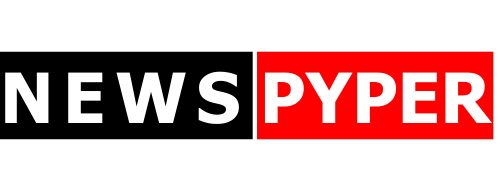In a rapidly moving world towards mobile-first strategies, the need for high-quality, cross-platform mobile applications has never been greater. Enter Flutter, an open-source UI software development toolkit created by Google that enables the development of natively compiled mobile, web, and desktop applications from a single codebase. This long-form guide aims to be your starting point in the exhilarating mobile development journey with Flutter.
Whether you’re a seasoned developer or a tech enthusiast with an eye for innovation, diving into the world of Flutter can unlock many opportunities. The framework’s rich features, including hot reload, a customizable widget suite, and superior performance, have garnered a loyal following within the tech community. This post will equip you with the knowledge and tools to craft beautiful, functional mobile applications using Flutter.
What is Flutter?
Before we develop into the practical aspects of mobile development with Flutter, let’s explore this framework. Flutter is built around the concept of widgets, which are not only the building blocks of any application built with Flutter but also represent the state of the application at any time.
Flutter’s single codebase approach means that from a single code instance, you can develop apps for different platforms such as mobile (iOS, Android), web, and desktop, providing consistency in UI and user experience across devices. It offers a rich set of customizable widgets, and the hot reload feature allows real-time updates in the app during development. This means you can instantly view changes to your UI or experience code updates without losing the app state.
Getting Started with Flutter
Before you can manifest your app ideas into tangible programs, you need to start at the beginning. The first steps in Flutter development involve setting up your development environment and familiarizing yourself with the basic structure and syntax of the language.
Installation and Setup
You’ll need to install the Flutter SDK to start your journey with Flutter. This includes the Flutter framework, a Dart SDK, and other essential development tools such as Android Studio or XCode for iOS and Android development. After installation, you must configure your development environment to run and debug Flutter apps.

Basic Structure and Syntax
Flutter apps are structured as a tree of widgets. The `MaterialApp` widget is at the root, which sets up your app. From there, different widgets can manage the state, handle user input, and interact with the device hardware. The language used to build these widgets and manage the app is Dart, which is known for its simplicity and speed.
To get a handle on the basics of Flutter, you should start with a ‘Hello, World!’ app, which will introduce you to the fundamental structure of a Flutter application, widgets, and the hot reload feature that Flutter developers love.
Understanding Flutter Packages
Flutter’s ecosystem contains thousands of packages that help extend the framework’s core functionality. These packages can provide everything from simple utilities to full-fledged features, such as image pickers, gradient animations, or advanced networking capabilities. Packages are distributed via pub. dev, Flutter’s official package repository, where developers can contribute their packages to the community.
To include a package in your Flutter project, you must add a dependency in your “pubspec. yaml” file. Once you specify a package and its version, running `flutter pub get` in your terminal will download and integrate the package into your project, making it ready.
Here’s how the section for dependencies within `pubspec. YAML might look:
“`yaml
dependencies:
Flutter:
SDK: flutter
http: ^0.13.3
“`
The `http` package in the above example, commonly used for making HTTP requests, has been added. By understanding how to discover, include, and use packages, you can significantly speed up development and add robust functionality to your Flutter applications.
Building User Interfaces
UI is a critical aspect of any mobile application. Flutter uses a variety of widgets and elements to create intricate and responsive UIs. Understanding how to work with these components will be critical to your mobile development journey.
Widgets and Their Role in UI Development
In Flutter, everything is a widget. Each aspect of an app’s UI is defined and assembled using widgets, from structural elements to styling components. You’ll work with Material Design widgets for Android apps and Cupertino widgets for iOS apps, and you can even create custom widgets to match specific design requirements.
Layouts and Styling
Achieving the perfect layout and style is crucial for an exceptional user experience. Flutter provides various layout widgets that let you create intricate UIs. These include `Column` and `Row` for vertical and horizontal structures, `Container` for styling and alignment, and `Stack` for layering widgets. You’ll learn to combine these widgets to create flexible and responsive layouts.
State Management
State management is another crucial aspect to master when developing mobile applications, as it directly affects how data flows through your app.
Managing and Updating the App State
In Flutter, the state is information that can be read synchronously when running the app. Managing state involves handling changes to your app’s data and UI. You can work the state locally within a widget or globally for the whole app.
Stateful vs Stateless Widgets
Flutter distinguishes between stateful and stateless widgets. Stateless widgets are immutable and contain no state data, while stateful widgets can change over time in response to user interaction or other factors.
Working with APIs
Most mobile applications rely on external data sources, usually provided through APIs. Integrating with APIs is a fundamental skill in mobile development.
Fetching and Displaying Data from APIs
You’ll learn to make HTTP requests to fetch data from the web and how to parse and handle this data within your Flutter app. For instance, you might use the `http` package to perform network operations.
Handling Network Requests
Handling network requests means managing the process of sending requests, waiting for responses, and handling errors. Flutter provides tools and libraries to assist in managing HTTP requests and other network operations.
Navigation and Routing
Mobile apps commonly contain multiple screens or pages. Navigating between these screens in an intuitive way for the user is essential.
Navigating Between Screens/Pages
Flutter offers a robust navigation system that helps users move between screens. You can use various named routes or push-and-pop functions to navigate within your app.
Implementing Routing in Flutter
Routing in Flutter involves defining and managing the routes in your application. You’ll learn to use the “Navigator” class to perform routing and how to pass data between screens.
Testing and Debugging
Quality assurance is a significant part of mobile app development. As you prepare to deploy your app, you must thoroughly test and debug your code to ensure it’s free of any unexpected behavior.
Tools and Techniques for Testing and Debugging Flutter Apps
Flutter’s testing and debugging tools are designed to make your development process more efficient. Debugging involves using print statements, the debugger, and the Flutter DevTools. Testing includes unit testing, widget testing, and integration testing to cover different layers of your app.
Publishing Flutter Apps
Once your app is developed and tested, the next step is to get it into the hands of users. Publishing your app on the Google Play and Apple App Store involves essential steps.
Packaging and Deploying Flutter Apps for iOS and Android
To package and deploy a Flutter app for iOS and Android, you must prepare assets, sign your app, and create release builds. You’ll also need to follow platform-specific guidelines for app submission and approval.
Conclusion
As you conclude this journey from the inception of your mobile app to its deployment, take a moment to appreciate the power and versatility of the Flutter framework. Not only does it facilitate the creation of beautiful, performance, and native mobile applications, but it also enriches the development experience with its robust set of tools and a vibrant community of developers.
By embracing Flutter, you put yourself at the forefront of mobile app development and open the door to cross-platform possibilities that can redefine how we think about mobile technology. Armed with this comprehensive guide, you’re ready to venture into Flutter mobile development and create the next generation of mobile applications.

Meet Jim Korner, the dynamic face of news at NewsPyper. From decoding weather mysteries to simplifying finance and adding zest to sports reporting, Jim’s your one-stop anchor. With a knack for making news easy and fun, he’s the go-to guy for a quick, reliable update on weather, finance, and sports. Tune in to Jim Korner for news that’s clear, engaging, and always on the mark.

